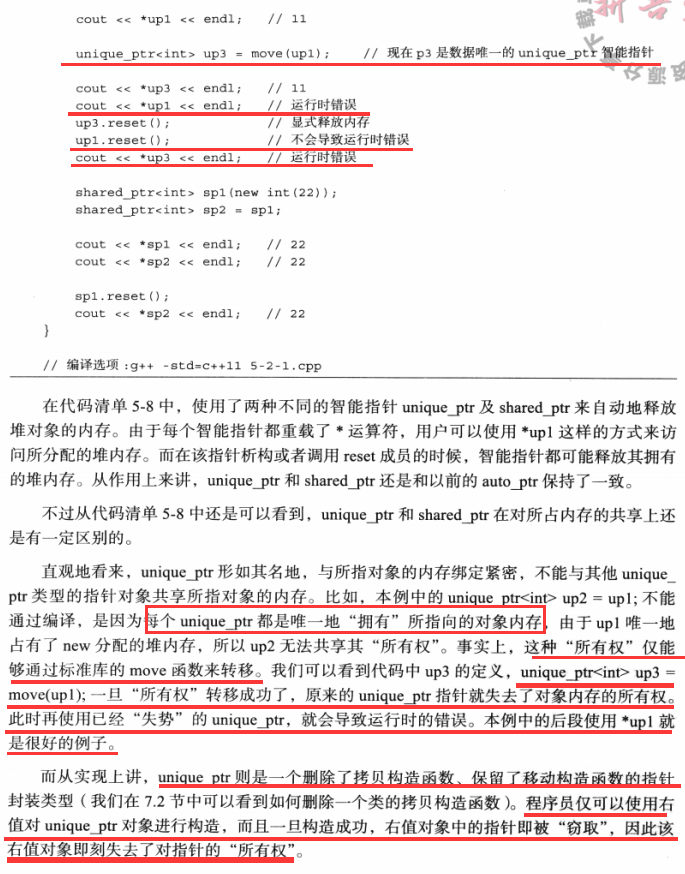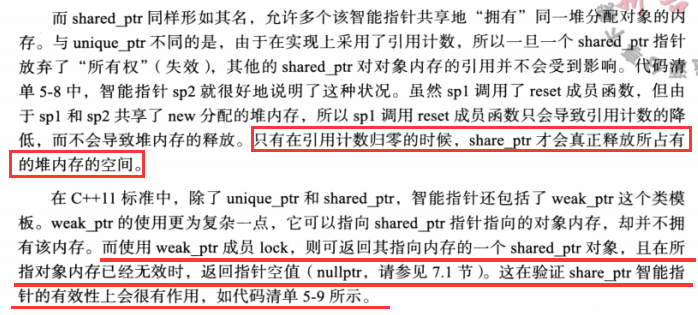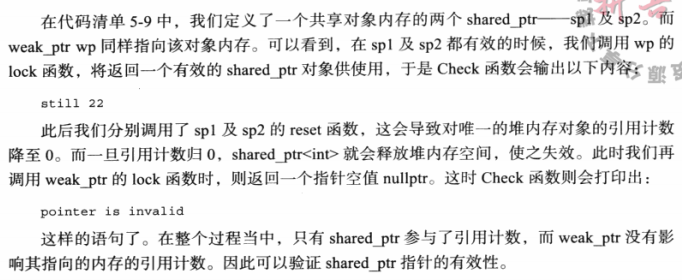1
2
3
4
5
6
7
8
9
10
11
12
13
14
15
16
17
18
19
20
21
22
23
24
25
26
27
28
29
30
31
32
33
34
35
36
37
38
39
40
41
42
43
44
45
46
47
48
49
50
51
52
53
54
55
56
57
58
59
60
61
62
63
64
65
66
67
68
69
70
71
72
73
74
75
76
77
78
79
80
81
82
83
84
85
86
87
88
89
90
91
92
93
94
95
96
97
98
99
100
101
102
103
104
105
106
107
108
109
110
111
112
113
114
115
116
117
118
119
120
121
122
123
124
125
126
127
128
129
130
131
132
133
134
135
136
137
138
139
140
| #include <stdlib.h>
#include <iostream>
#include <sstream>
#include <string>
#include <memory>
class Human
{
public:
Human() : mNum(nullptr)
{
mNum = new int(123);
printf("Human 构造\n");
}
Human(const Human& _h)
{
mNum = new int(*_h.mNum);
printf("Human 拷贝构造\n");
}
Human(Human && _h)
{
mNum = _h.mNum;
_h.mNum = nullptr;
printf("Human 移动构造\n");
}
virtual ~Human()
{
printf("Human 析构\n");
if (mNum) delete mNum;
}
void show(){ if(mNum) printf("--- num:%d\n", *mNum); }
private:
int* mNum;
};
void testSmartPoint1()
{
std::unique_ptr<Human> up1(new Human);
up1->show();
std::unique_ptr<Human> up3 = std::move(up1);
up3->show();
up3.reset();
system("pause");
}
void testSmartPoint2()
{
std::shared_ptr<Human> sp1(new Human());
std::shared_ptr<Human> sp2 = sp1;
std::shared_ptr<Human> sp3 = sp1;
printf("--- ref count:%ld\n", sp2.use_count());
sp1.reset();
sp1.reset();
sp1.reset();
printf("--- sp1 ref count:%ld\n", sp1.use_count());
printf("--- sp2 ref count:%ld\n", sp2.use_count());
printf("--- sp3 ref count:%ld\n", sp3.use_count());
sp2.reset();
printf("--- sp2 ref count:%ld\n", sp2.use_count());
printf("--- sp3 ref count:%ld\n", sp3.use_count());
sp3.reset();
printf("--- sp3 ref count:%ld\n", sp3.use_count());
system("pause");
}
void testSmartPoint3()
{
std::shared_ptr<Human> sp1(new Human());
std::shared_ptr<Human> sp2 = sp1;
std::weak_ptr<Human> wp = sp1;
printf("--- ref count:%ld\n", sp2.use_count());
sp2.reset();
printf("--- sp1 count:%ld\n", sp1.use_count());
std::shared_ptr<Human> sp4 = wp.lock();
if (sp4)
printf("--- sp4 ref count:%ld\n", sp4.use_count());
sp1.reset();
printf("--- wp ref count:%ld\n", wp.use_count());
if (sp4)
sp4.reset();
printf("--- wp ref count:%ld\n", wp.use_count());
std::shared_ptr<Human> sp5 = wp.lock();
if (sp5)
printf("--- sp5 ref count:%ld\n", sp4.use_count());
}
int main()
{
testSmartPoint3();
system("pause");
return 0;
}
|







